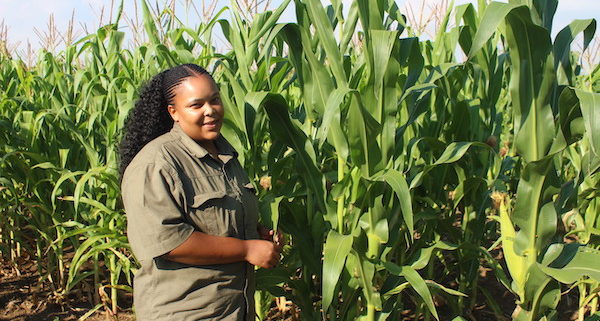Keneilwe Raphesu – African Farming
Autumn is the time for sheep and goat farmers to work at keeping the body condition scores of their ewes up so that when lambing starts in about a month, the lambs and kids will get the best possible start. During autumn grass starts losing quality and cattlemen change to a higher-protein winter lick to stimulate the intake of low quality grass. This increases the intakes of low-quality grass. Tomato tunnel farmers are harvesting the last of their crops before winter’s frosts arrive.
PIGS
Keneilwe Raphesu, Holfontein, North West
We had over 50 pigs but due to the poor infrastructure, we culled most of them and kept one boar and 8 sows. We then bought in 10 more sows and some weaners to raise for the market.
Raising pigs helps with cash flow in our business because they are an easier and quicker component of our operation. The piggery is not that busy, as we approach the winter period. We have mated the sows and they will farrow soon.
We try and limit the breeding activities in the winter so that we do not have very young piglets when it’s cold. This is due to our infrastructure, which does not have a heating system. The mortality rate goes up in winter, so we try not to have as many pigs farrowing during this time. Production will probably start to peak after winter.
We sell pigs at auctions, directly to the abattoir and to individuals. The piglets we’ve bought are put on Asa’s ASA 2 feed, which can be fed from five weeks to about eight weeks when they reach 20kg.
They should get between 4kg and 6 kg of ASA 2 per piglet. From two months to four months we give them grower with a daily average intake of 2kg/pig/day and weight gain of 900g/pig/ day. In the last month they are put on the finisher before they go to market.




Leave a Reply
Want to join the discussion?Feel free to contribute!